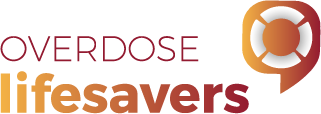
Kate revives Adam after an oxycodone overdose
Preferred Name: Kate
Gender: Female
Age: Mid 30s
Who is Kate?
Kate lives with her two children in Sydney’s south. She describes her ethnic background as ‘Australian’: like both her parents, Kate was born in Australia. Kate’s primary source of income is a Commonwealth Parenting Payment*. While Kate hasn’t used take-home naloxone herself, she thinks it’s a ‘very clever thing’ and is interested to learn more about it.
Brief Outline:
Kate describes an occasion when her ex-partner Adam overdosed at her home. He had just been released from jail, and she prepared some oxycodone for him, which he took and then started to ‘turn blue’. Kate moved him from the bed on to the floor and hit him in the chest area several times to revive him. Kate has also been scared that she herself may have been overdosing on several occasions.
(Note: strong language)
I was panicking, but I knew to hit him on the chest area, because growing up I used to do Nippers and Life Saving. I had first aid certificates and I’ve had some practice at heart massage. If I hadn’t been able to bring him back, I would have called emergency for an ambulance.
That’s the only time I’ve been there when someone has overdosed. I’ve had some scary times when I thought I could be overdosing, too. I developed a heart problem from my drug use and nearly died a couple of years ago, after I left hospital. I went back to taking opioids and had a few times lying in my bed at night where I’d taken so much I couldn’t move, and was thinking ‘Oh fuck, I hope I wake up in the morning’.
The idea of overdosing frightened me because I’d worry that my kids would see me, and my parents would see the fits [syringes] around the house. And I’d worry that I wouldn’t wake up, and then what would my family think? I’d try to reduce the risk of overdose by taking my time if there was anything new to try. I’d inject some of it first, rather than put it all straight in.
Reflecting on the number of people who have died from overdoses, Kate said take-home naloxone and overdose response training were ‘very clever’ things to do because ‘a couple of years ago everyone was, you know, people were dying, so it’s really good that the government and universities have jumped on it and worked out something like this.’
While she hasn’t accessed take-home naloxone herself, Kate (F, mid 30s, NSW, non-prescribed opioids) thinks it’s a ‘clever thing’.
Yeah, it’s very clever thing that they’ve worked [that] out, you know. I know a couple of years ago, everyone was, you know, people were dying. So I reckon it’s really good that the government and universities have jumped on it and worked out something like this. I wouldn’t know how to use it, or anything, but I guess there would be training and that for it.
Kate (F, mid 30s, NSW, non-prescribed opioids) says that she wasn’t offered take-home naloxone at any of the alcohol and other drug services she used but she hears other clients mention it.
No. I didn’t even know there were take-home packs until the girl in [the residential rehabilitation unit] told me […] It was always hush-hush with me, so you know, I didn’t know. Nothing was said at the [methadone] clinic, or anything about this. [Can you tell me about what you’ve heard about take-home Narcan?] Yeah, someone said there was a class that they put on. I’m not sure if it’s at the needle exchange or the [opioid pharmacotherapy] clinic, but it was like a class and someone was showing what to do when [overdose] happens. That’s all I really know. I don’t know any more about it.

